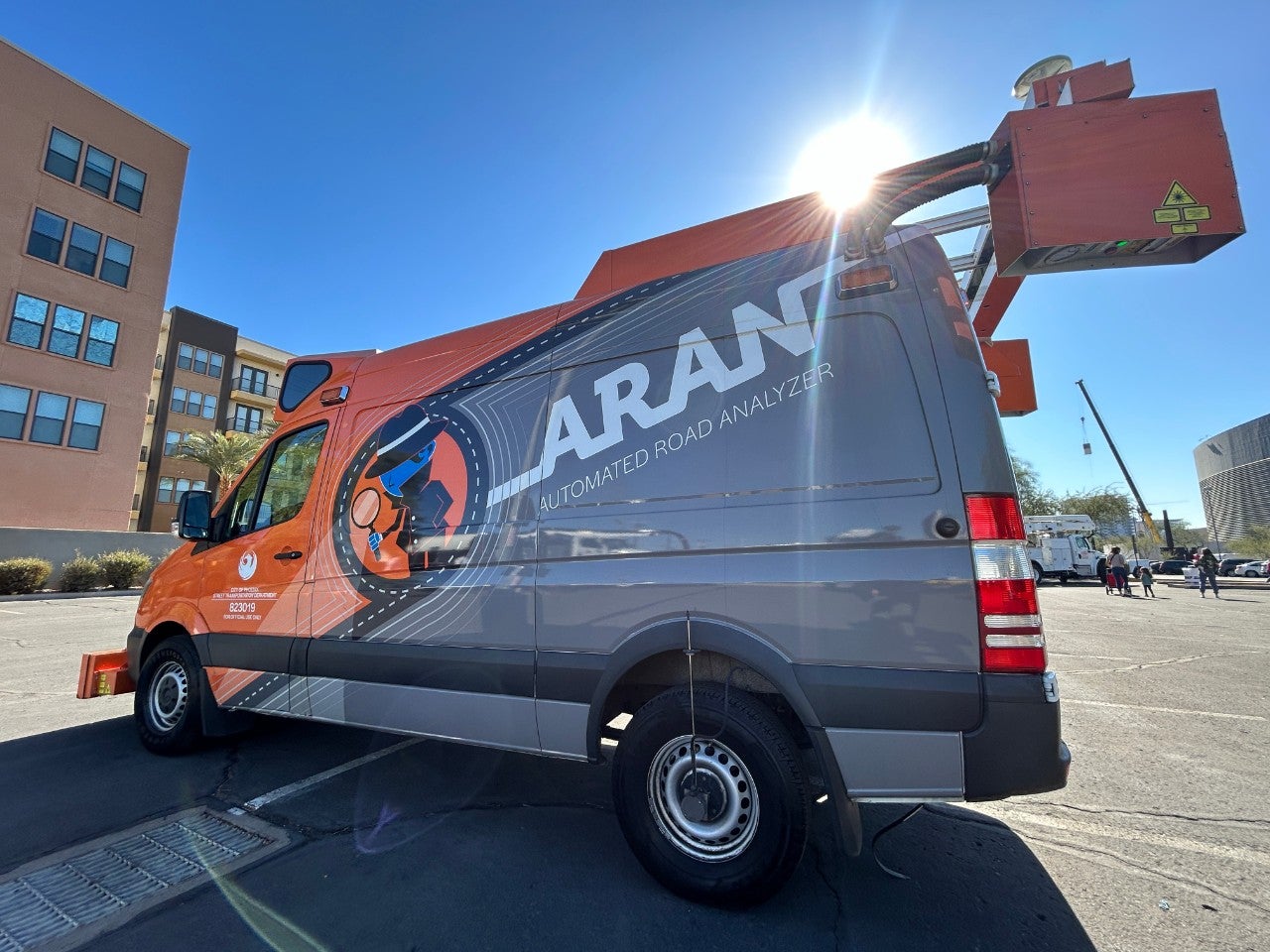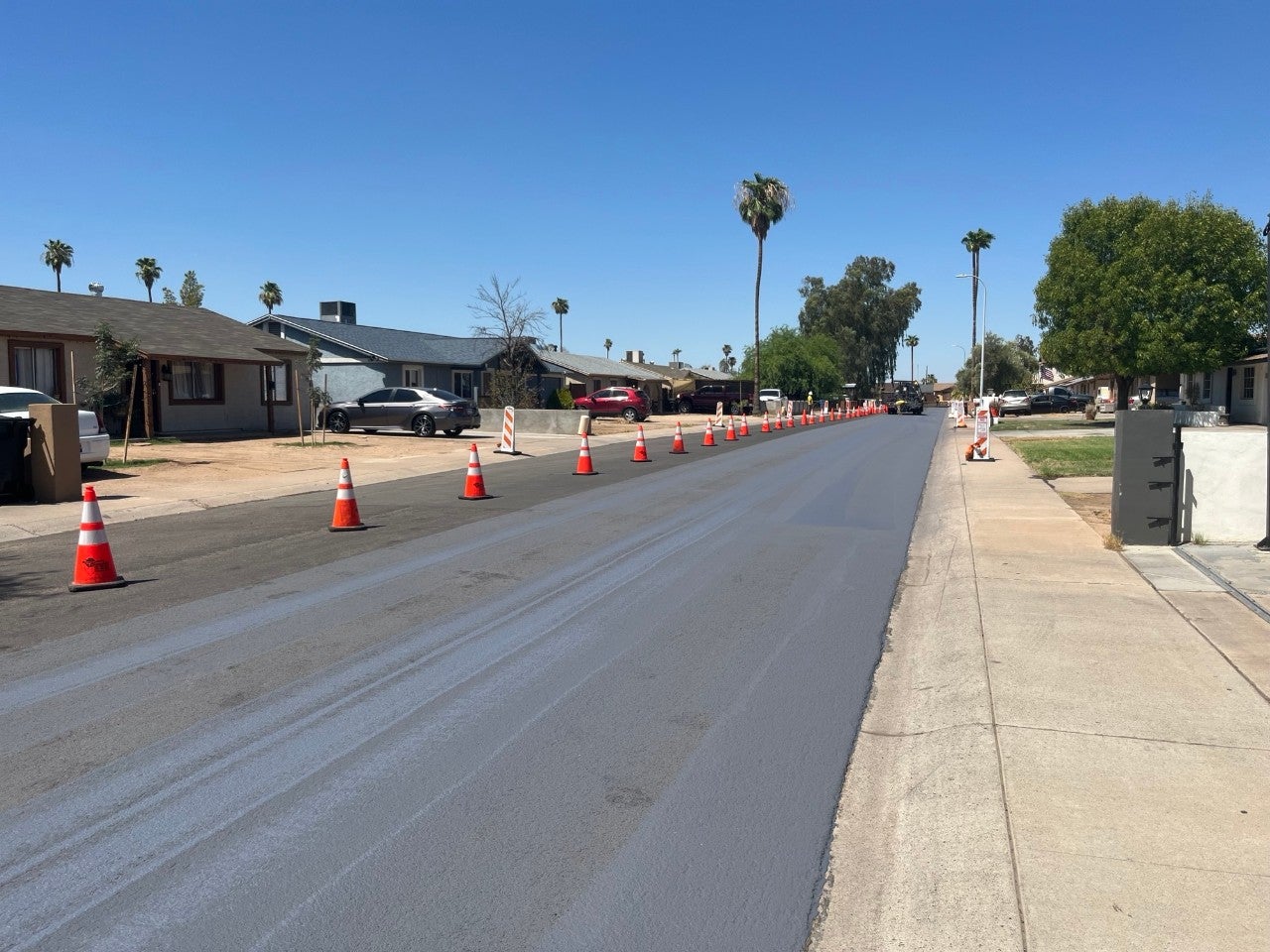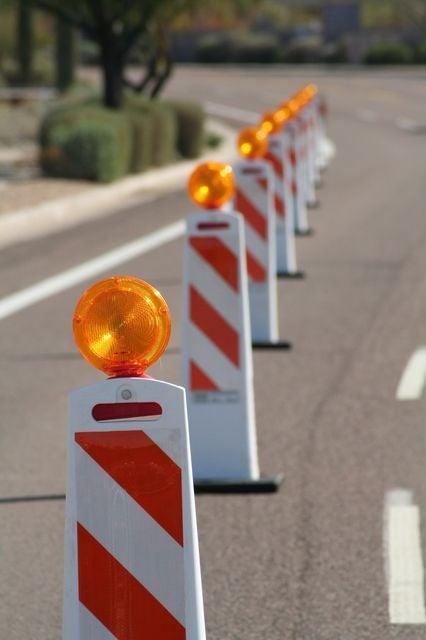Phoenix launches a Citywide food drive to assist residents experiencing food insecurity during the holidays.
Street Maintenance Division

Phoenix has a comprehensive roadway network of more than 4,850 miles of public streets. The Street Maintenance Division is responsible for the planning, programming, and execution of the City’s street maintenance program. This involves maintaining all roadways within the City’s jurisdiction limits and does not include private streets or state routes maintained by other agencies.
The Street Maintenance Division performs annual routine street maintenance activities from early spring to fall, keeping the City’s street network in a state of good repair and extending its lifespan. The work to repair and improve our roadways ranges from pothole patching to the longer-term and most expensive projects like resurfacing and reconstruction.
Enhancing the safety of the roadway and improving the ride comfort of the road surface provides a benefit to the traveling public.
Click the button below to access our interactive Pavement Maintenance dashboard.
The budget for the City’s street repair and maintenance program for fiscal years 2019 through 2023 is programmed to include $90 million per year. The program is funded through revenues from the Arizona highway user gas tax and Transportation 2050 (T2050) sales tax.
Prior to the voter-approved 35-year Transportation 2050 sales tax, which became effective Jan. 1, 2016, the annual budget for street repair and maintenance was typically between $24 - $27 million.
Through T2050 nearly $1 billion from Transportation 2050 program funds will be allocated to maintain the city’s arterial and major collector street network.
Learn more about the City's pavement program.
To determine the order and priorities of which streets will receive pavement overlays, Streets utilizes a pavement management system methodology. The foundation of that methodology is field data obtained using a high-tech pavement management vehicle, the Automated Road Analyzer (ARAN). ARAN measures and records the condition of roads, evaluating them on surface roughness, environmental stresses, and structural condition. Based on the resulting pavement condition index (PCI) rating, which is measured 0-100 (worst to excellent), staff uses these objective measurements of roadway conditions to develop an initial list of roads to receive an asphalt overlay. Learn more about ARAN.
Once it is developed, the initial list of roads is put through a rigorous coordination review, which includes evaluating the following:
- Coordination or conflicts with other City projects
- Right of way concerns
- Environmental issues
- Utility issues or conflicts
- Field visual inspections
- Pavement age
- Roadway traffic volumes
- Alternate treatments
- Economic and community impacts
Although objective criteria are used in identifying roads in greatest need of maintenance, staff strives to closely balance street maintenance activities and funding equitably across the city within resource limitations.
Asphalt pavement is designed to be flexible, which allows it to adapt to the wide temperature swings that occur in Arizona. Following initial construction, pavement begins the process of oxidation, which is basically the evaporation of the oils in the pavement. Over time, the pavement becomes dry, brittle, more rigid, and less flexible. Repeated traffic loading also contributes to the degradation of the pavement over time.
The aggregate starts wearing away, causing cracks. Some small cracks can start to show in the first year of new pavement. The city of Phoenix strives to provide a quality maintenance program to extend the life cycle of asphalt 25-30 years and even up to 40 years, saving taxpayer’s money while providing safe and efficient roadways. See the Maintenance and Resurfacing Techniques section for commonly used pavement maintenance techniques.
Treatment | Description |
Crack Seal | Crack seal entails filling cracks in the pavement with modified asphalt rubber. The sealant helps prevent infiltration of water into the pavement. This treatment is used on streets that are in relatively good condition. |
Fog Seal | A fog seal is a light application of a diluted, slow-setting asphalt emulsion to the surface of an aged pavement surface. Fog seals are used to restore or rejuvenate pavement surfaces. |
Resurfacing | Various other treatments such as Slurry Seal, Fractured Aggregate Surface and Micro Seal are considered to be resurfacing. These treatments add a thin surface with asphalt emulsion and aggregate to seal the surface and fill small surface defects. |
Mill and Overlay
| A “mill & overlay” is a street maintenance technique that requires the removal of the top layer (2 inches) of a street by the grinding action of a large milling machine. After the top layer is removed, a new layer of pavement is put in its place. Asphalt resurfacing is necessary when the asphalt surface has reached the end of its service life or preventative treatments no longer benefit a road. |
-

Meet Detective ARAN
Detective ARAN collects evidence of road conditions to plan pavement maintenance treatments and help keep Phoenix streets in good condition.
-

Cool Pavement Program
Learn more about the Cool Pavement Program and how it will continue to benefit our City!
-

Accelerated Pavement Maintenance Program
This $200 million program includes pavement maintenance that was part of the original five-year work plan for 2019 through 2023.